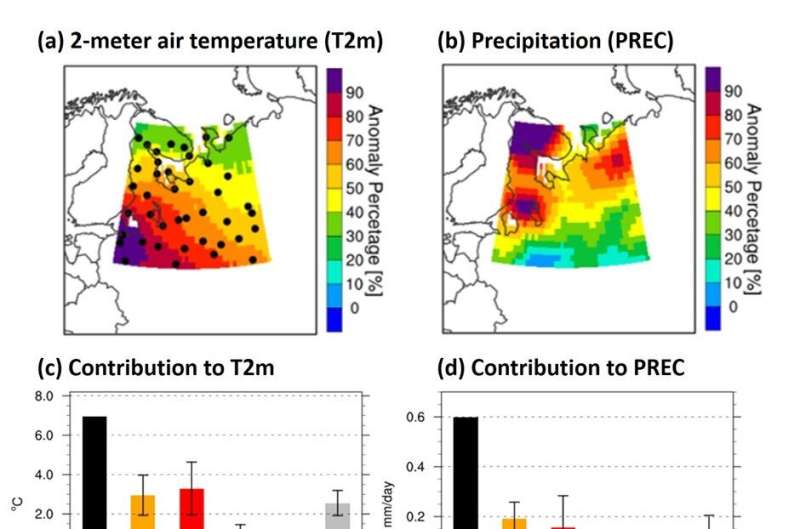Human influence is the culprit for warm and wet winters in northwest Russia

During the smoldering hot days of summer, people miss the cool breeze of winter. Both intense cold and heat are unbearable, but warm and wet winters also lead to problems. For example, northwest Russia experienced the warmest and wettest 2019/20 winter on record since 1902. Because of this, the permafrost melted, raising the risk of floods and landslides in the following spring, as well as rapid melting of snow and ice, which reduced available water resources and increased the risk of droughts in summer. What is the cause of this abnormal winter climate that increases the likelihood of sequential natural disasters?
A POSTECH research team led by Professor Jonghun Kam (Division of Environmental Science and Engineering) has pinpointed human influence as the reason for the warm and wet 2019/20 winter in northwest Russia. This is the result of analyzing the climate model data from the Coupled Model Intercomparison Project Phase 6 (CMIP6) and places humans as a greater influence than the North Atlantic Oscillation (NAO), which is one of the natural variabilities.
The NAO is a phenomenon in which the difference in sea level pressure between the Icelandic low pressure and the Azores high pressure fluctuates like a seesaw, and is one of the major meteorological phenomena in the North Atlantic. It is known that hot winters may occur in certain regions due to changes in this oscillation, but it is still unknown why hot and wet weather appears simultaneously in winter.
According to the analysis, the NAO was strong during the given period but the chance of warm and wet weather was extremely slim if greenhouse gas did not increase due to human activity. In the northwestern region of Russia, the probability of a warm winter has increased by about five times due to human activity, and the probability of a wet winter has increased by about 20 times. The probability of hot and wet winters from greenhouse gases increased by about 20 and 30 times, respectively.
The research team warned that hot and wet winters may occur frequently in northwest Russia in the future since the region is sensitive to temperature changes caused by global warming. In particular, the winter weather in the region plays an important role in determining the spring and summer weather in Eurasia. These conditions cannot be overlooked by Northeast Asia including the Korea Peninsula.
Professor Jonghun Kam explained, “We need to pay more attention to the climatic change in winter, because it increases the probability of natural disasters during the spring and summer in the following year. We must preemptively respond to climate change by continuously studying the changes in the risk of floods in spring or droughts in summer in not only the given region but also other Northeast Asia region.”
Recently published in the Bulletin of the American Meteorological Society, this research was also published in “Explaining Extreme Events of 2020 from a Climate Perspective,” which reports on the causes of abnormal climates across the globe in 2020.
Report: Climate change contributed to some of 2020’s worst weather
Jonghun Kam et al, Anthropogenic Contribution to the Record-Breaking Warm and Wet Winter 2019/20 over Northwest Russia, Bulletin of the American Meteorological Society (2022). DOI: 10.1175/BAMS-D-21-0148.1
Provided by
Pohang University of Science & Technology (POSTECH)
Citation:
Human influence is the culprit for warm and wet winters in northwest Russia (2022, May 24)
retrieved 24 May 2022
from https://phys.org/news/2022-05-human-culprit-winters-northwest-russia.html
This document is subject to copyright. Apart from any fair dealing for the purpose of private study or research, no
part may be reproduced without the written permission. The content is provided for information purposes only.
For all the latest Science News Click Here
For the latest news and updates, follow us on Google News.

